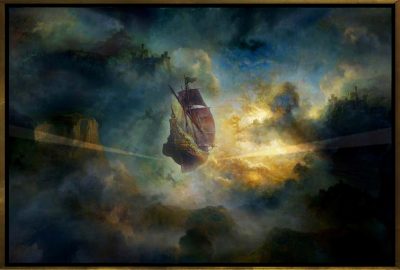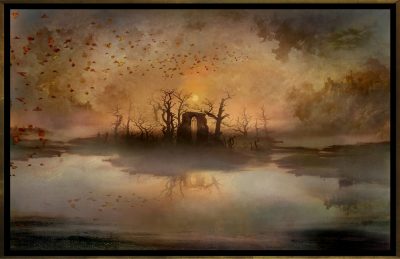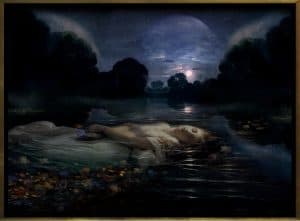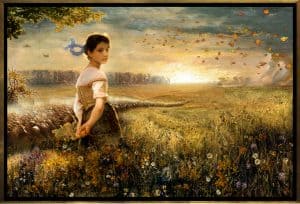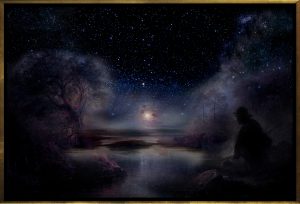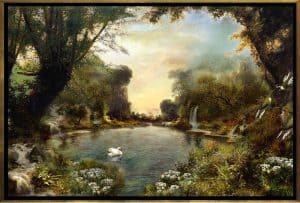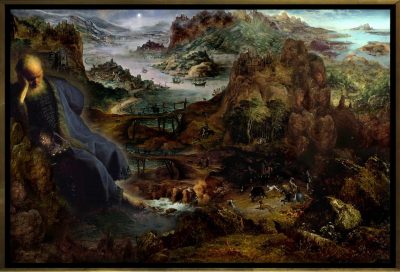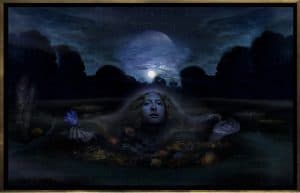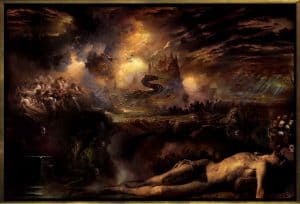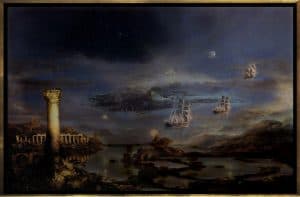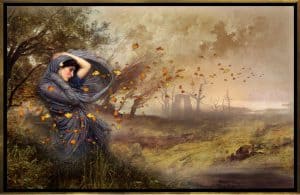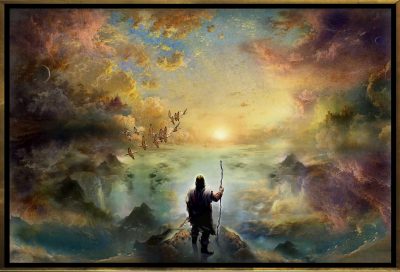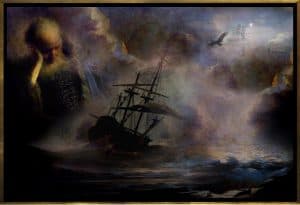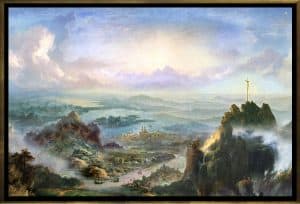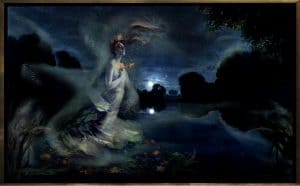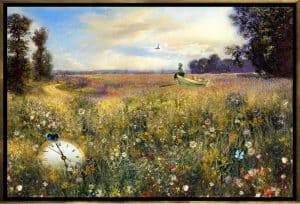Poems by Zeno Roth
One morning in early 2004 after just having read a few of Zeno Roth´s beautiful poems, I had an idea: Why not composing a series of pictures based on those poems?
Since my head was bursting with ideas, I decided to do three different motives for each of the selected poems. Soon afterwards four pictures were finished and I decided to send them to my friend Zeno, to find out what he thought. When it came to his work, Zeno was a very sensitive man – and rightly so, I should add – so I was a little nervous about his reaction. To my relief, he really liked what he had seen, and soon later it was decided to release a calendar or even a book featuring the fruits of our cooperation.
Due to certain circumstances this has not happened yet, but it will, hopefully soon…
SCHWEIGEN
One translation of the title „Schweigen“ could be ‘Silence’ – but in fact, it means ‘not saying anything’ i.e. ‘saying nothing’. The poem describes the soul´s ascent from a worldly attached life towards detachement and – finally – spiritual liberation in a kind of ‘Samadhi’-state. All this is done in a wonderful poetic and effortless language… and the title „Schweigen“ here also reflects a state of higher consciousness, which one simply can’t put into words.
The image of the flying, or floating ship is a symbol for the soul, breaking free – having escaped the powers of the everchanging wind and waves of the ‘night’ (a symbol for an unenlightened worldly life) and now floating ‘daywards’.
I remember that my main intention during the composition of the motif was, to create a dreamlike, otherworldly athmosphere, symbolising that the whole content of „Schweigen“ is a matter of feeling rather than physical vision. That’s why the ship is shown from below and the whole scenery remains symbolic, almost floating and vage, being a place of inner vision.
ZEIT
The centrepiece of this work is derived from the famous painting Abtei Im Eichwald by german painter Caspar David Friedrich.
The ruin, the autumn leaves, the fading daylight and the faint reflection of the old abbey in the water – everything in this picture symbolizes the transience of our earthtly existence. Time flies…
WEGE
Wege is the plural of the word Weg. It means ‘ways’, which is a general expression for the pathes or roads we ´re taking to reach your destination. Like in English it can be used in an abstract ‘way’. Here it describes all the countless and intricate ways we find ourselves on, as we walk through life.
The Picture is meant to be an image of ‘the whole world’ – in the style of the 16th century – there´s night and day, the landscape reaches out from tiny flowers in the foreground to the infinite distance of the horizont – and yet it´s all in the mind of the old man, contemplating his ‘ways’ of the past…
IN NAMENLOSER STILLE
A straightforward translation of In Namenloser Stille would be In Nameless Silence, but in contrast to Schweigen here the silence is initiated form the outside, not from within. The poem describes being in a place very remote – on the peak of a mountain, high above the everyday life and engulfed by the grandeur and majesty of nature.
With this composition I wanted to capture the moment of being ‘between the worlds’ – deep down the earth and high above the sky (cosmos), below the familiar, above the ‘great wide open’, here matter, there spirit. But in contrast to Wege, there´s no rememberance or assessment, here everything is felt, is feeling – like the sound of the ´Aum´.

